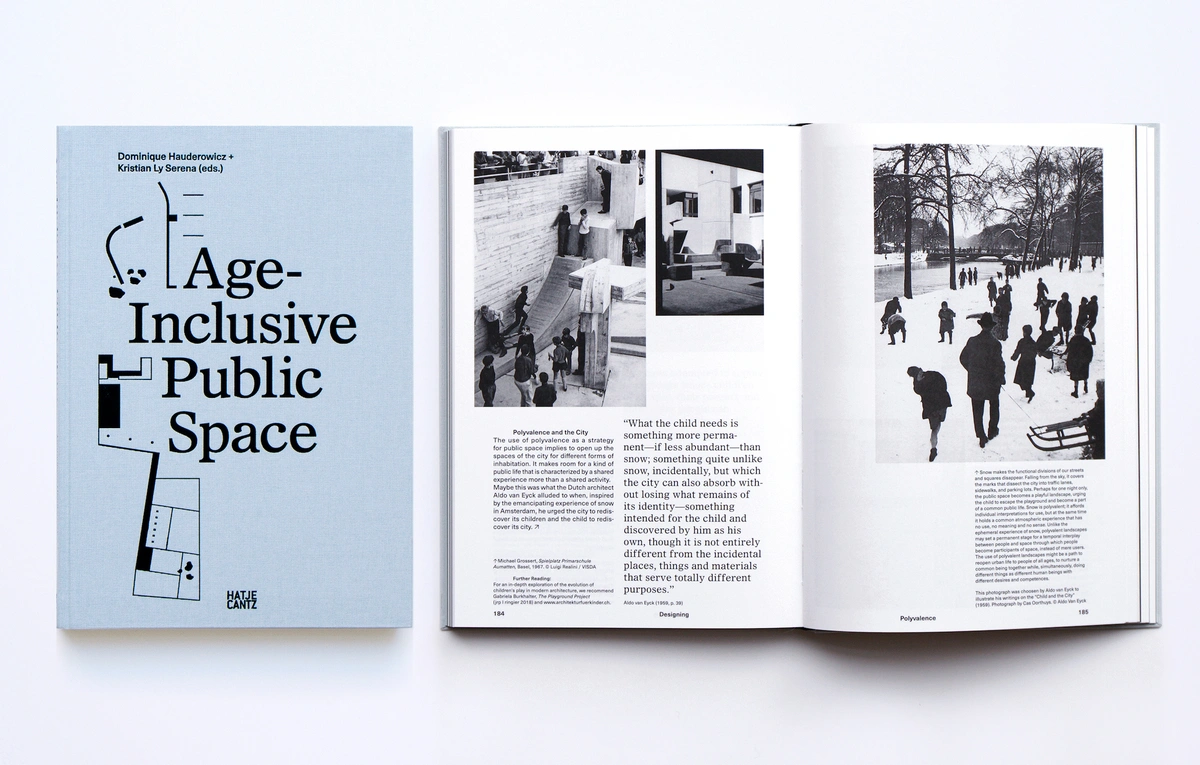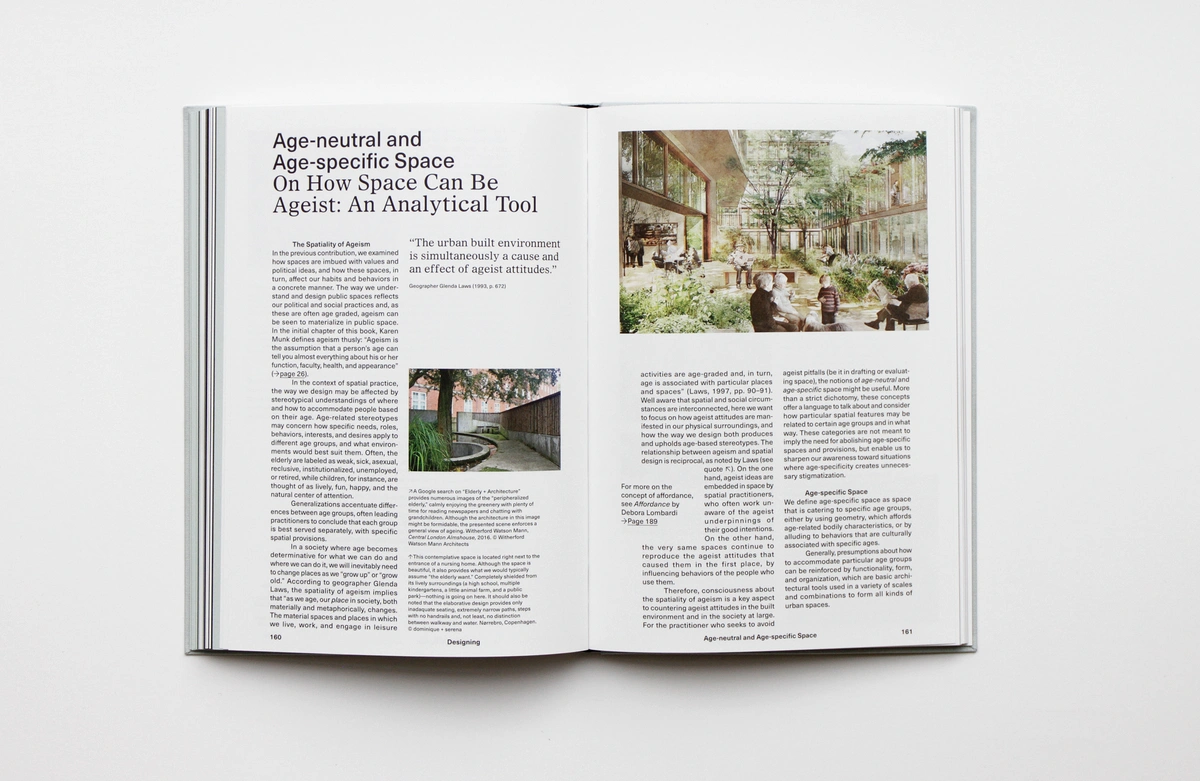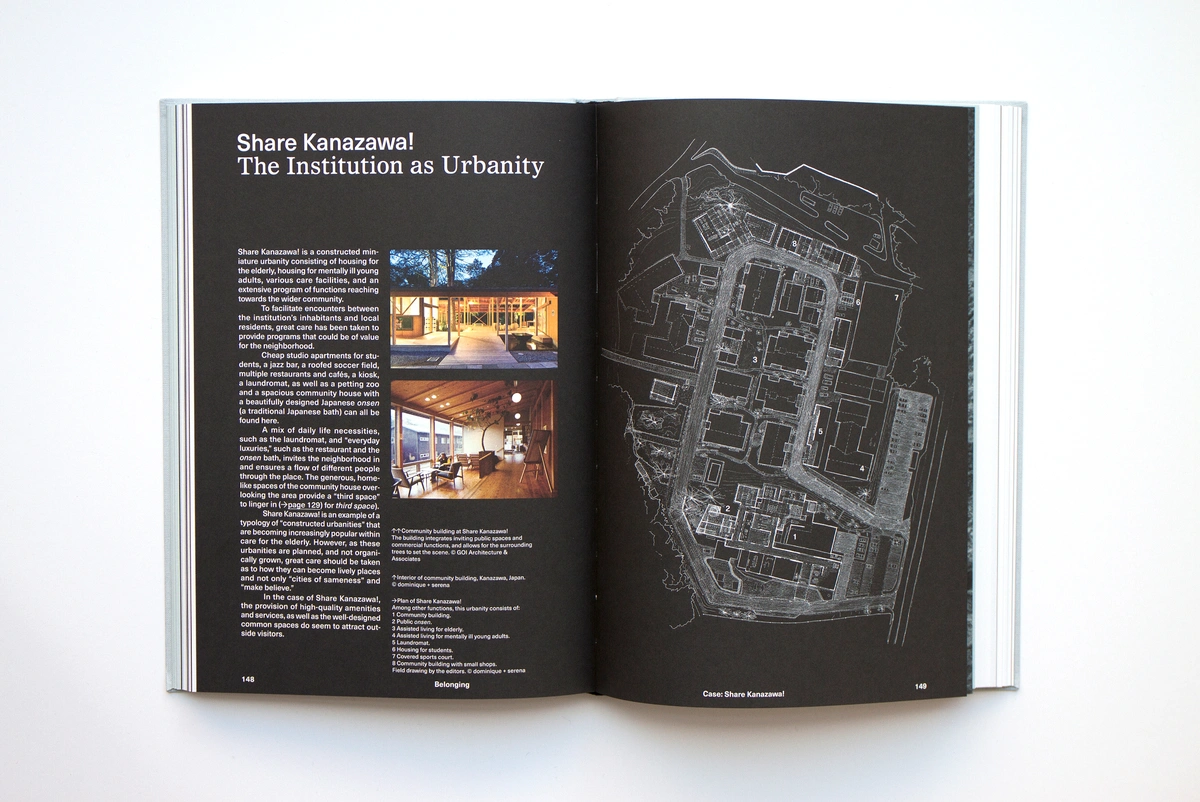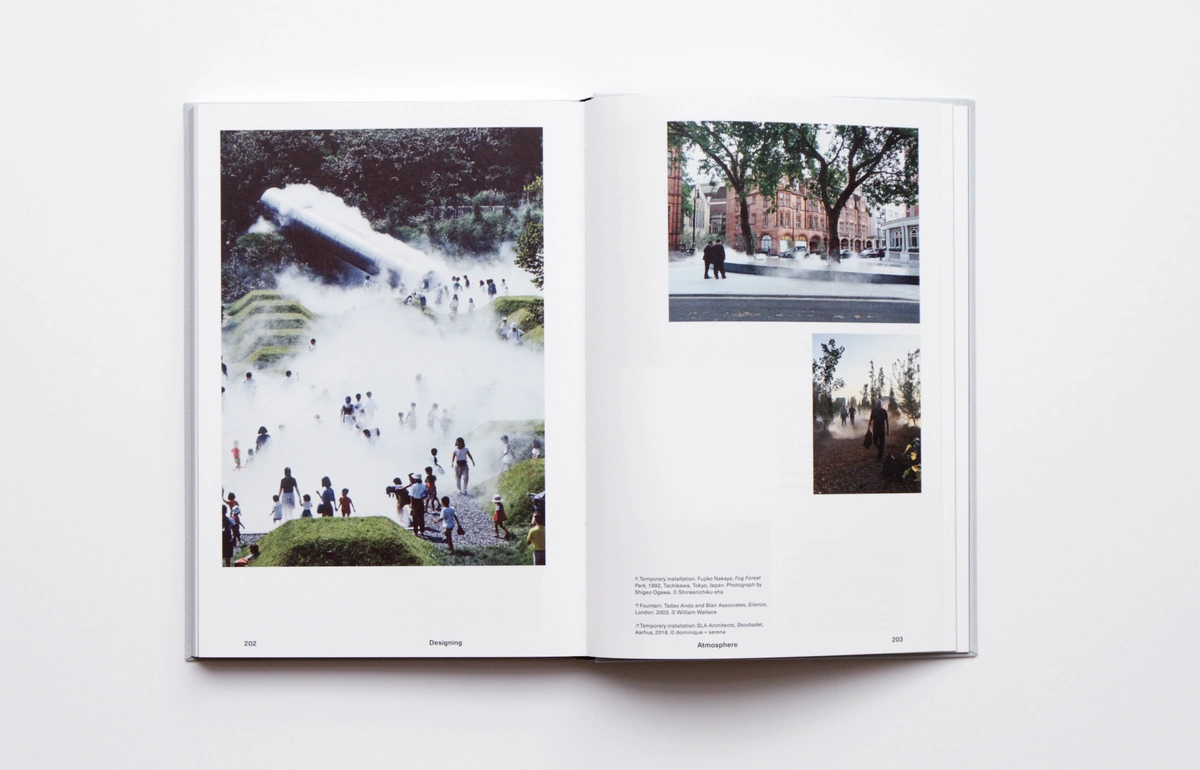Across developed countries, demographic change and the continuous movement of people from the countryside to city centers is resulting in increasingly ageing urban populations. New public spaces however, tend to over-represent attention to the young and middle aged and the high-paced activities and sporty lifestyles associated with them, whereas elderly citizens are often neglected by contemporary urban design practice.
“Age-Inclusive Public Space” provides practitioners with inspiration as well as theoretical and practical knowledge on how to design public space to meet the needs of people of all ages. Conceived as a dialogue between practicing architects and contributors from a variety of disciplines, this book combines academic research, architectural case studies, and introduces an age-inclusive design methodology. The drawings, photographs and illustrations of contemporary built environments, historic gardens, art installations and atmospheric landscapes presented here provide a holistic appreciation of the many facets of age-inclusive spatial practice.
Hatje Cantz Verlag, Berlin 2020.
English
2020. 240 pp., 224 ills. softcover
17.80 x 25.40 cm
ISBN 978-3-7757-4590-1
The book is a collaborative effort by practitioners, researchers and academics (philosophers, gerontologists, geographers etc.) all contributing their expertise and knowledge on the themes of ageing and the built environment. With an open mind, the contributors seek to - in a joint and dialectic manner- to sketch out a holistic perspective for what it could mean to create public and urban spaces for all ages. Not shying away from the obvious complexity of the task, the book deals not only with urban planning, architecture and design - but also addresses more ephemeral values such as agency and belonging. Avoiding all kinds of check lists and 'ready made' solutions to create "age-friendly" spaces, the book aims at a kaleidoscopic vision on the topic, understanding the elderly as a catalyst for the creation of urban space, rather than a 'problem that needs to be solved'.

The book contains references to a wide variety of installations, spaces, projects both contemporary and historic - each adressing different aspects of age-inclusion.

"The urban built environment is simultaneously both a cause and an effect of ageist attitudes." The book points to how we (re)produce stereotypical understandings of certain age groups - and wishes to offer different paths forward.

The book contains examples also of care institutions and their relationship to the public space especially from Japan- as the editors see great potential in this space in-between the formalized life of the institutions of care and public life.

The advantages of working with atmospheric and sensory experiences in urban space are also addressed.
dominique + serena practices at the crossroads of architecture, art and politics with a special interest in the social potentials of architecture. In building- and landscape projects as well as through theoretical work, the studio aims to analyze, question and transform how material realities may inspire various forms of social contact. As critical observers of society, the need to foster age-inclusive environments has been a key concern in the studio’s practice, recently manifested in the editing and co-writing of the publication Age-inclusive Public Space (Hatje Cantz, 2020).
